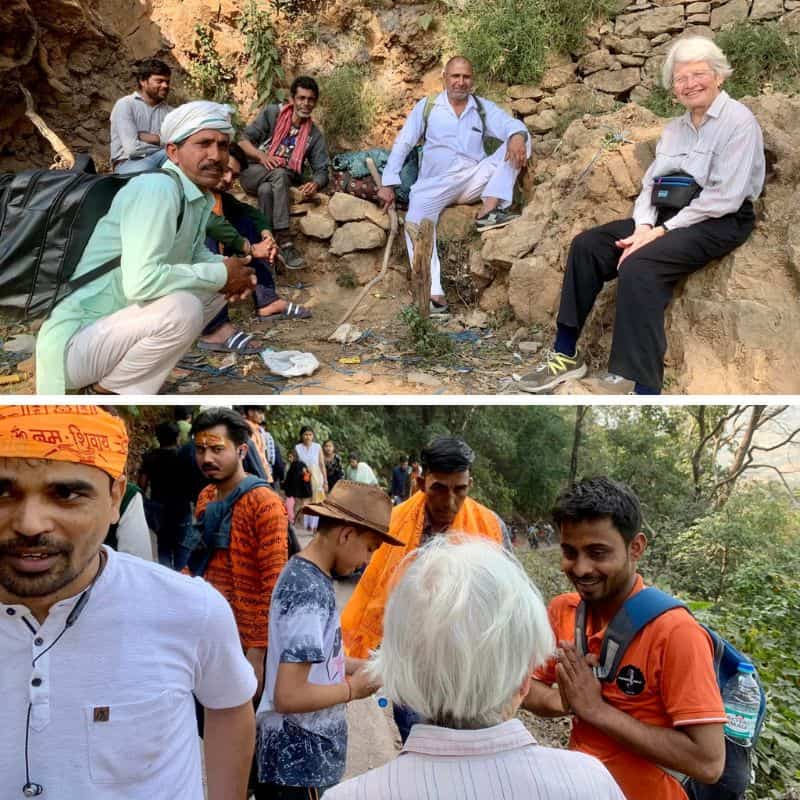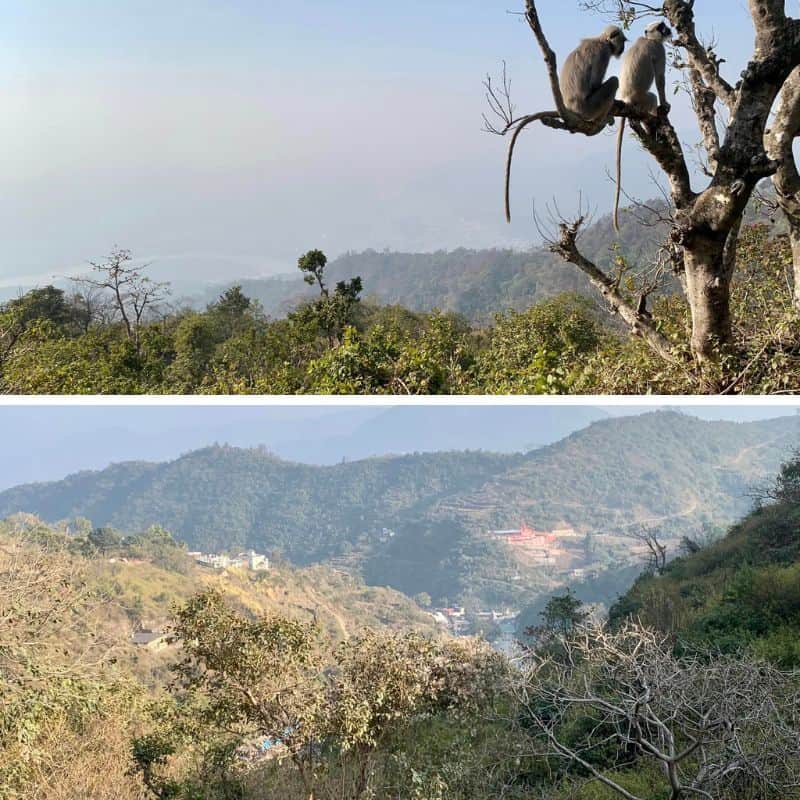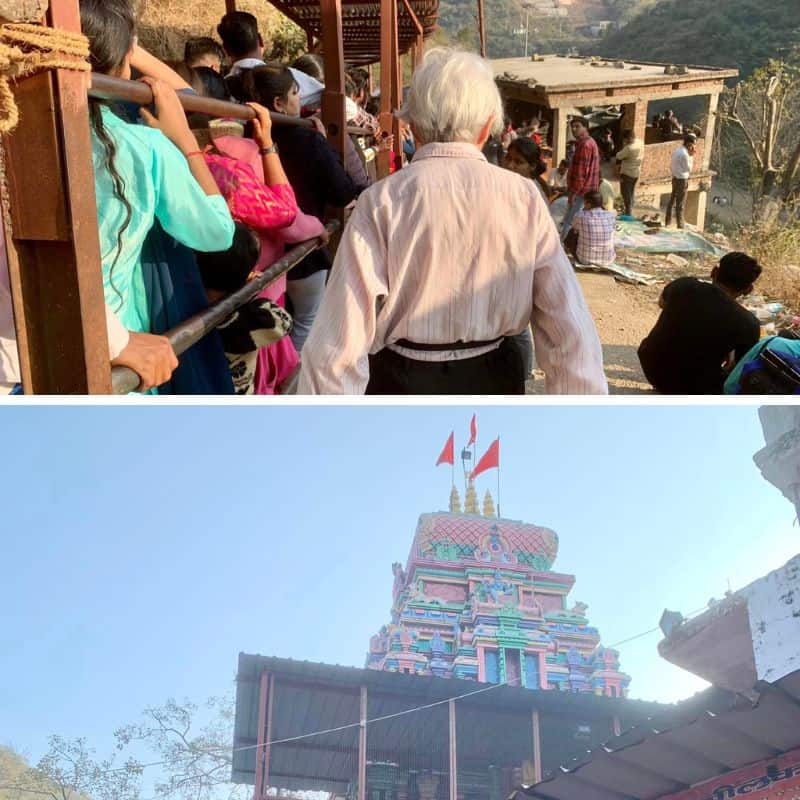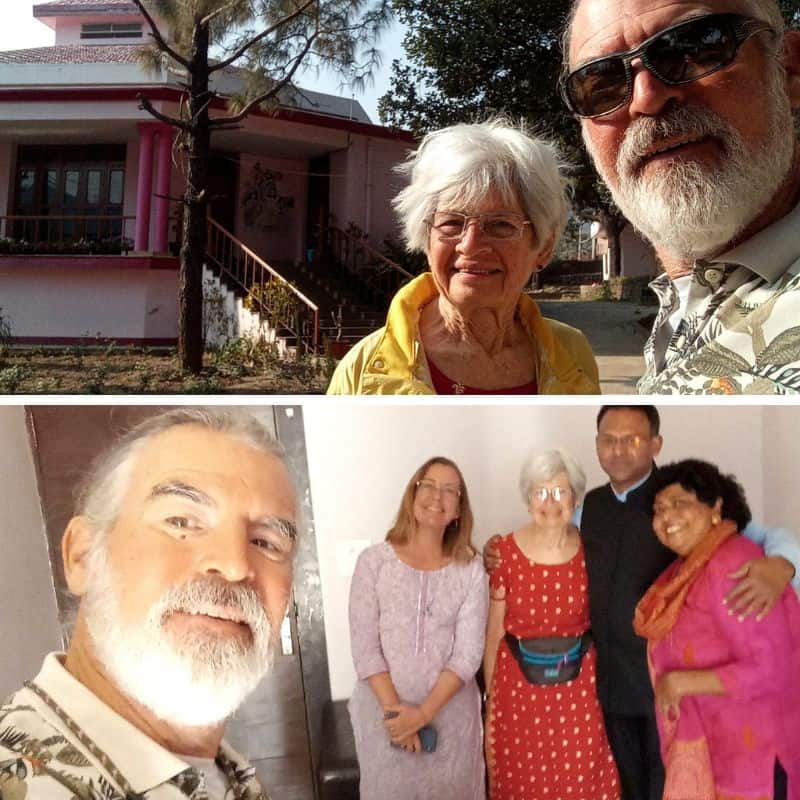Mahashivaratri is one of the most important Hindu festivals. It honors Lord Shiva, one of the three major gods in Hinduism.
Devotees believe worshipping Lord Shiva will bring peace, prosperity and happiness. It’s also a day to consider your values and make improvements. I dig that.
A common greeting according to the Times of India: “Lord Shiva, grant peace & prosperity to the entire mankind. Show the correct and right path to each & every human being in this universe. Happy Mahashivratri 2023!” (Also Maha Shivaratri.)
Celebrating gods in Rishikesh
A Hindu god
In Rishikesh, the Neelkanth Mahadev Temple is dedicated to Lord Shiva. Thousands of devotees make the journey to the temple for this day.
Hindus believe the temple marks the spot where Shiva drank poison that originated from the sea when deities and demons tried to make an elixir for immortality. The poison could have destroyed the world, but Shiva saved creation by holding the poison in his throat, which turned blue.
Mom Diane and I stumbled upon the pilgrimage footpath on a hike to a nearby waterfall. We decided to join the trek up to the temple with our good-hearted Indian friends.

People offered free snacks along the way, and encouraged us to keep going up, up, up. It was a festive atmosphere on the mountain trail through a tiger reserve (no tigers spotted). Indians asked us to take photos with them. One man even tried to touch Mom’s feet as a show of respect for her strength.
From our rental apartment in Tapovan, our adventure took us about eight miles out, with 3,330 elevation gain! The views were spectacular – even if a little humid and hazy.

We decided not to join the long line to enter the temple. The festival goes all night and the line was maybe half a mile. We lucked out and found a rare, not-stuffed taxi to take us back down the mountain, in which we invited four adults and one child for the ride back to Rishikesh.

A Catholic god
Hindus make up about 85% of this country. Catholics make up about 1.5%. The rest are other Christians, Sikhs, Jains, Buddhists, and Muslims, the latter of which are the largest minority.
The next day after our trek to the temple, I saw more of the ‘real’ India. But from the perspective of a different faith. The Catholic Church in Rishikesh is unusual – people sit on mats on the floor instead of in pews. A bongo drum – usually played by a young boy – accompanies women singing hymns during mass.
And after the service, lunch at a parishioner’s home with the parish priest – on Mom Diane’s 84th birthday!

My view
I’m not Catholic. I’m not Hindu. My spiritual beliefs do not fit ‘regimented’ narratives, though the values of each are universal, and I do share those. (Same basic values as Muslims, Jews, etc.)
Yet I understand the need for organized religions to remind us of these values in a ‘civilized’ world… to a degree.
I accept all religions we have encountered on our travels: Christianity, Islam, Judaism, Taoism, Buddhism, Jainism, and Hinduism — and even the tribal religions of our indigenous Ati friends.
I don’t want to change what anyone believes, just as I appreciate no one trying to change what I believe, which is simply: A Power Greater Than Myself. A Universal Force. The Law of Nature. Nothing I can understand fully as an as yet unenlightened human being.
I also believe the world would be a better place if we all followed one of my favorite mantras: ‘Live and let live.’
Another favorite: Life is Now!
Thanks for reading, “Celebrating gods in Rishikesh.”
Further reading: for those interested in the rise of Hindu nationalism from an outside religious perspective, read an article in ‘America’ – a Jesuit publication. For an outside diplomatic perspective with a G20 current events angle, read an article in ‘The Diplomat’ – aggregator of opinion and analyses.

